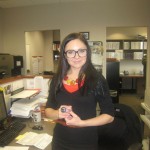It can be difficult to identify migraine triggers. The condition is unstable, and the triggers might shift over time. Making fundamental judgments may be hard when there is so much uncertainty. There's always the possibility that whatever meal you consume or activity you choose will set off a migraine attack.
Triggers don't always make sense. They can be weird and unpredictable. It's also possible that the simplest, most particular item may trigger a migraine that has been simmering for days. Indeed, visiting a neurologist can help get rid of migraine attacks. But it is also important to know weird migraine triggers to avoid.
1. Bright lights
Nearly 85% of people who get migraines claim that their sensitivity to bright or flashing lights increases during an episode. However, a subsequent study discovered that the trigger was not as powerful as previously thought: when patients were exposed to flashing lights, they had a modest increase in headache frequency, but not enough to indicate that the lights reliably prompted the headaches.
2. Cheese and wine
For a migraine patient, a romantic evening with wine, chocolate, and cheese may become a disaster. Certain meals cause splitting headaches. While food-based triggers are prevalent, with red wine, chocolate, and cheese being the most prominent causes, specialists have yet to determine which chemicals are to blame.
3. Smell
Nerve receptors on the insides of the nostrils process odors. In rare circumstances, extremely strong scents might stimulate specific nerve receptors, causing a migraine. Osmophobia is a sensitivity to scents, similar to photophobia, which is a sensitivity to light. It is typical to experience an aversion to scents during a migraine episode, just as it is to light. Avoiding strong fragrances in perfume, foods, or chemicals can help reduce migraines triggered by odors.
4. Overuse of medication
If you suffer from frequent migraine headaches and use acute medicine prescribed by your doctor more than 10 days a month, you may experience more migraine episodes. It is a phenomenon that is called Medication Overuse Headache (MOH). If you have MOH, you must first avoid using the drug and allow it to leave your system before you can break the vicious cycle of pain.
5. Physical activity
Have you ever experienced a migraine attack after physical activity? If yes, you are not alone. Excessive energy consumed through exercise, sexual activity, or the heat of the day might cause a migraine. The questionable aspect is that one may not feel it until many hours later, making it impossible to connect the two incidents.
6. Changes in pressure and temperature
Pressure and temperature changes influence a large number of people. This is one of the most significant triggers, and no one has any control over it. If you learn that the temperature outdoors is set to drop or climb substantially, a migraine may be on the way. Some people may even detect a shift in pressure ahead of time.
7. Dehydration or hunger
People who often suffer from migraines should avoid skipping meals. It is yet unclear how this occurs. It's most likely connected to low blood glucose levels. Insufficient water consumption has also been claimed as a migraine trigger. Some researches show that poor water intake is connected to headaches starting in almost 40% of respondents.
8. Food additives
The artificial sweetener aspartame and the flavor enhancer monosodium glutamate has been linked to migraines (MSG). The subject of its potential impact on migraine sufferers remains unanswered. Most controlled studies have failed to find a relationship between MSG consumption and headache, or any other ailment, in healthy people. However, small research showed that MSG might cause headaches and discomfort in the face and head.






Comments